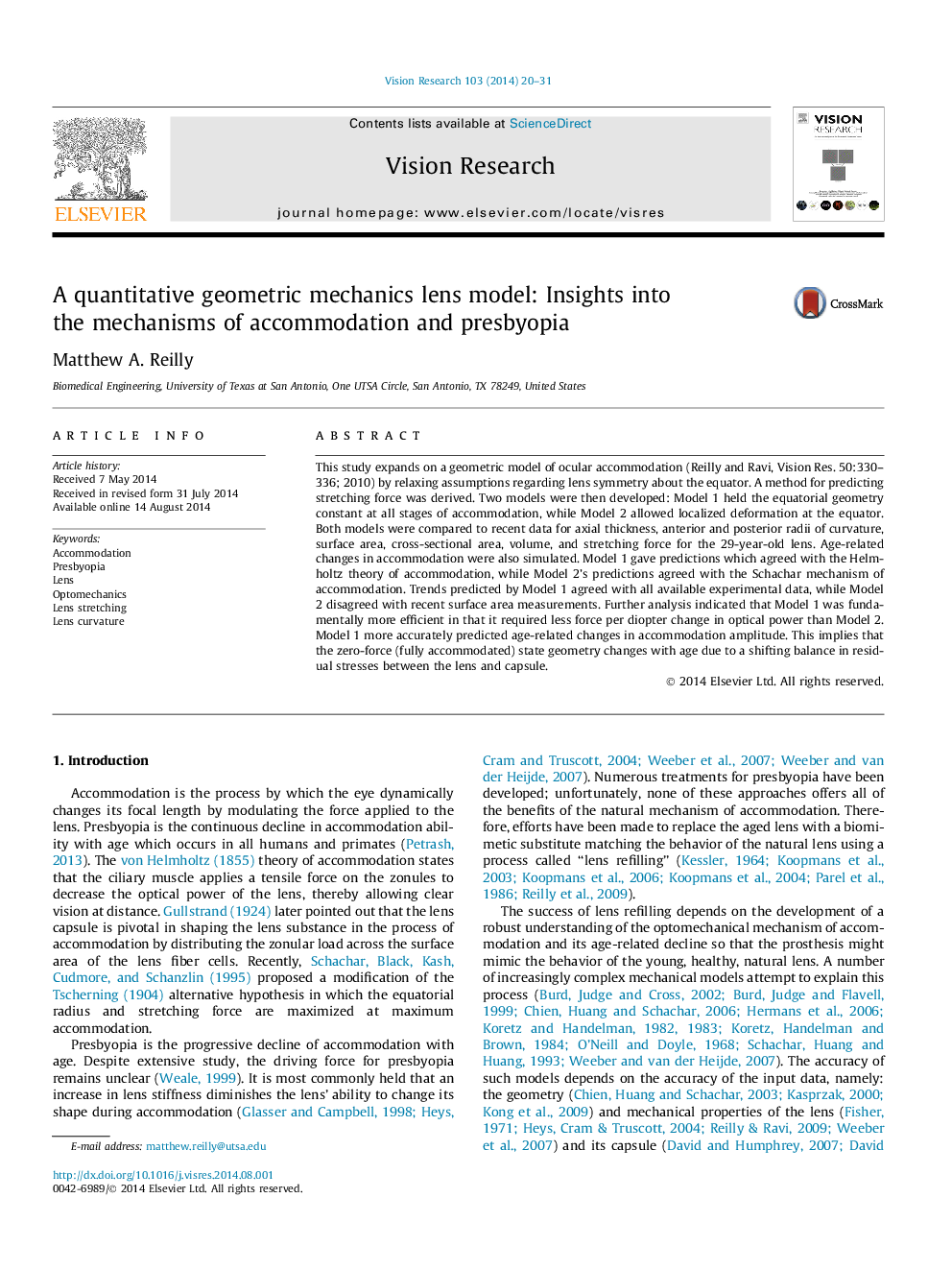| Article ID | Journal | Published Year | Pages | File Type |
|---|---|---|---|---|
| 6203393 | Vision Research | 2014 | 12 Pages |
â¢New geometric model of accommodation quantitatively predicts changes in young lens.â¢Modified model predicts increased optical power due to stretching.â¢Both models simulate age-related changes in accommodating lens.â¢Age-related changes in lens geometry primarily responsible for presbyopia.â¢Helmholtz mechanism of accommodation inherently more efficient than Schachar's.
This study expands on a geometric model of ocular accommodation (Reilly and Ravi, Vision Res. 50:330-336; 2010) by relaxing assumptions regarding lens symmetry about the equator. A method for predicting stretching force was derived. Two models were then developed: Model 1 held the equatorial geometry constant at all stages of accommodation, while Model 2 allowed localized deformation at the equator. Both models were compared to recent data for axial thickness, anterior and posterior radii of curvature, surface area, cross-sectional area, volume, and stretching force for the 29-year-old lens. Age-related changes in accommodation were also simulated. Model 1 gave predictions which agreed with the Helmholtz theory of accommodation, while Model 2's predictions agreed with the Schachar mechanism of accommodation. Trends predicted by Model 1 agreed with all available experimental data, while Model 2 disagreed with recent surface area measurements. Further analysis indicated that Model 1 was fundamentally more efficient in that it required less force per diopter change in optical power than Model 2. Model 1 more accurately predicted age-related changes in accommodation amplitude. This implies that the zero-force (fully accommodated) state geometry changes with age due to a shifting balance in residual stresses between the lens and capsule.
